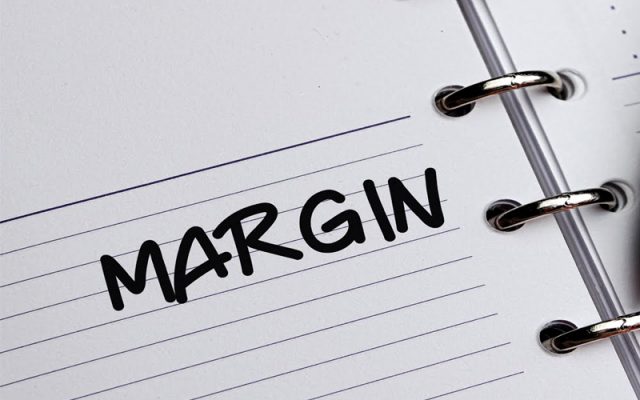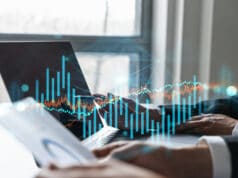You may not always have sufficient funds to trade big. Trading on the margin allows you to go beyond the limited funds you may have and invest more to reap higher profits. However, you’re allowed to trade through your margin account up until a certain percentage. Once your trade hits this level, your agent will give you a ‘margin call’ as a warning. Let’s read further to understand the essence of margin and how it can affect your trading.
What is Margin in Forex?
Margin simply refers to the funds you have provided to your broker for the purpose of safekeeping to cover the risk you create for him. Based on your account strength, the margin is formed by a percentage of the open trading position. A part of the trading account balance, the margin requested determines the maximum leverage you can use in your trading account. As every broker has different margin requirements, you must research what percentage margin a broker offers and their terms before finalizing one. When you trade forex on the margin, you pay a mere percentage of the complete value of the positions which open your trade. This can influence your trading account and profits, and it is advised to understand the risk before taking it.
Calculation of Forex Margin
Assume that a broker offers a leverage of 1:30 for forex trading. This means that for every 30 units of currency in the position you open, 1 unit is required as a margin. If your forex position is $30, the required margin would be $1.
Alternatively, let’s assume you decide to trade with GBP and JPY, and you use USD for trading. If you buy $100,000 GBP against an equal number of JPY, you are paying in JPY and buying in GBP. Yet, you are purchasing JPY with USD, and the margin will be calculated on USD or the currency of your main account.
The formula for calculating margin requirement is as follows,
Margin Requirement = [(BASE Currency) / (Account Currency) x Units] / Leverage
where,
- Account Currency = USD
- Base Currency = GBP
- Quote Currency = JPY
- Base Currency/Account Currency = Current Exchange Rate of GBP/USD
- Units = 100,000
- Base Currency/Account Currency = Exchange Rate b/w the Two Traded Currencies.
How can it affect your trades?
When considering how your trades are going to be affected, it is worth mentioning the three points below.
Free margin
Free margin is simply the quantum of funds available in your trading account where you choose to open new trade positions. Free margin includes unrealized gains or losses from open positions. To calculate it, subtract the used margin from the account equity, which is the sum total of account balance, i.e., the total amount deposited in your trading account.
For instance, you have a trading account with a $2,000 balance and a 10% margin. You want to open a position that costs $10,000. Then consider the following:
- A/c Balance = $2,000
- Margin = $1,000
- Free margin = $1,000
- Equity = $2,000
If your position improves and you have a profit of $100, we can see that,
- Account Balance = $2,000
- Margin = $1000
- Free Margin = $1,100
- Equity = $2,100
The free margin and equity show unrealized profits, and the margin used and account balance remain unchanged.
Forex margin level
The Forex margin level can be described as,
Margin Level = (Equity / Used Margin) * 100
Margin levels are used to analyze if an investor can open new positions. If an account has a 0% level of margin, it means that the account does not have any new open positions. In contrast, a 100% margin level means that account equity and the margin you have used are equal.
For instance, your account balance is $20,000, and you open a position that has a margin requirement of $2,000. Suppose the market moves against you, which results in an unrealized loss of $18,000 – the equity balance will be $2,000. So your margin level is 100% as equity and margin are equal, and you will not be able to open any new trades unless the market moves in another direction.
If this market scenario persists, your broker will close the losing positions of yours, and the biggest position will be flattened first. They will do this in accordance with your stop loss-level. This way, closing the open positions will increase the margin level (by releasing the used margin), which can be used to guide it back above the stop-loss level.
Mind the margin calls!
A Margin call is one of the worst nightmares a trader can have. You can get one when you don’t have enough usable margin. Your account needs more deposits. A margin call can be an indicator for the trader that the market is not moving in their desired direction. In some situations, when the market is volatile, and the market forces totally move against you, your broker may not be able to make the margin call beforehand – this can lead to heavy losses.
In order to avoid such situations, you must keep an eye on the balance in your account regularly and make use of stop loss on every order you place. You should manage the risk properly in order to manage your account and be more aware of the risks to eventually avoid them.
Final Thoughts
Not everyone has the capital to place the big bets in the market, which is where the Forex margin comes in. However, it is a double-edged sword. In order to successfully trade in the Forex market, you must keep in mind the set margin and how exceeding it can affect your account. On the one hand, if you’re smart enough, you can make enormous profits, but, on the other hand, if you miss a step, you may risk emptying your trading account. Make sure to also carefully read the fine print of the agreement you have with your broker to avoid any surprises.




